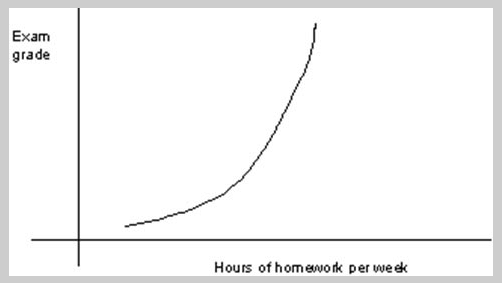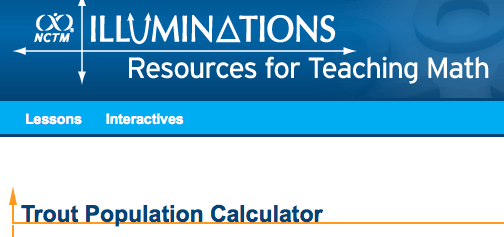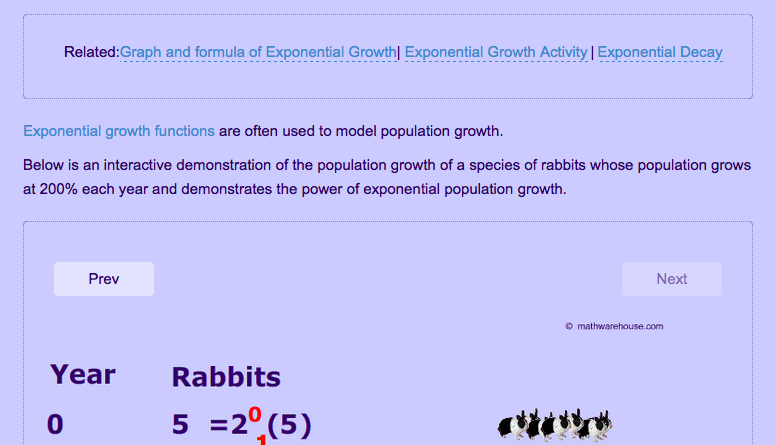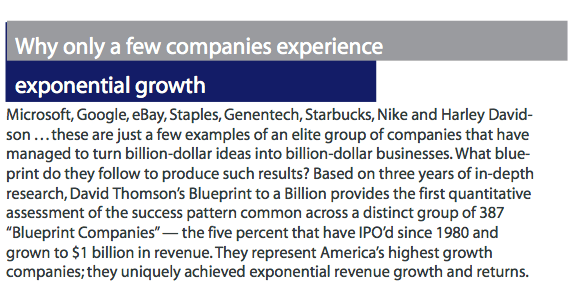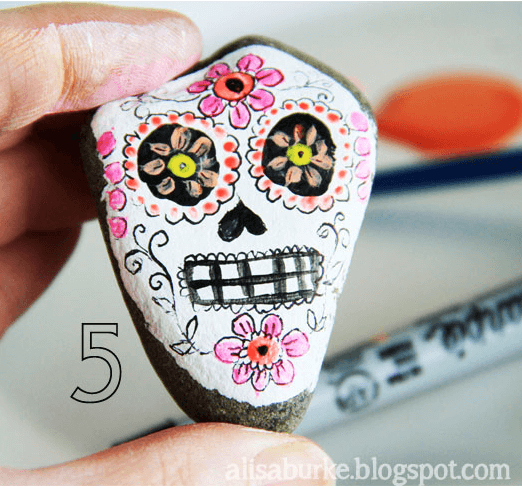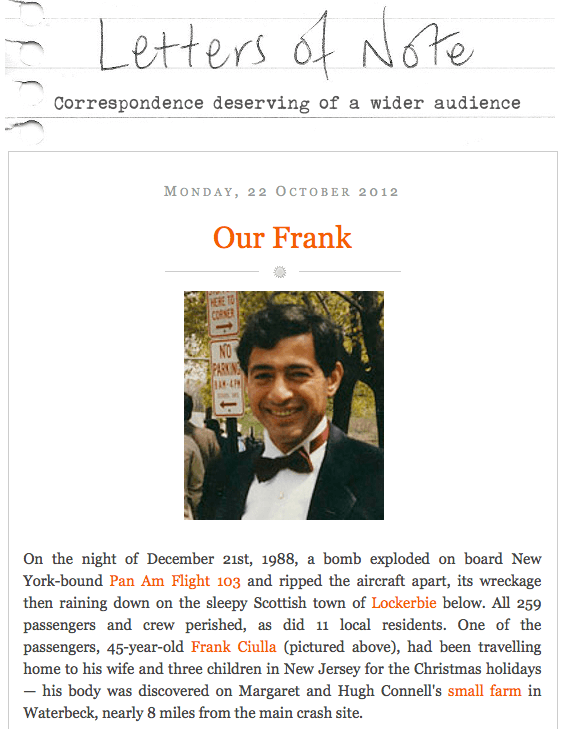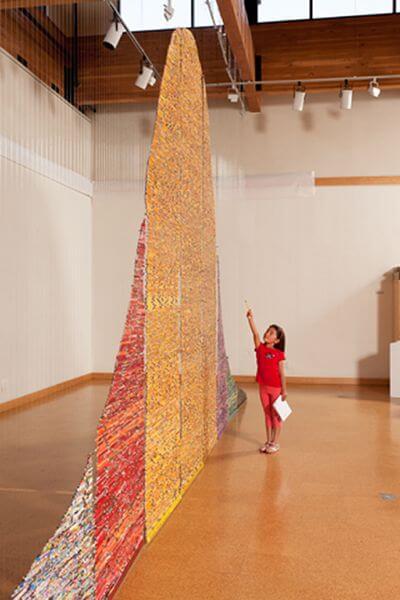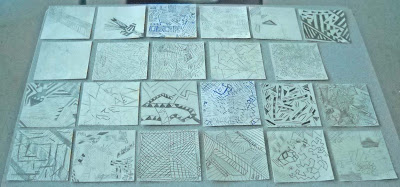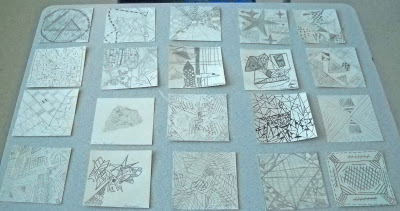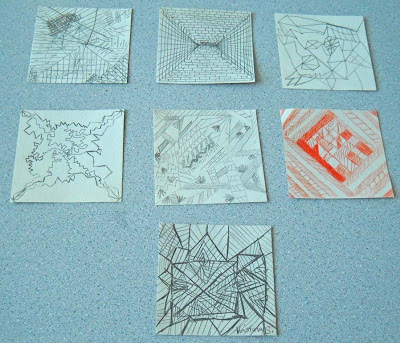Archive for the ‘algebra’ Category
Algebra Unit: Exponential Relationships
Brief note: a time-out from art-related items to post an assignment for a Coursera class for assessment by peers.
Unit: Exponential Relationships
9th grade, but 8th graders are welcome!
Investigation 1: Exponential Growth
Welcome to our new unit in Connected Math, Exponential Relationships! We have five different investigations, and you will find yourself doing a lot of comparisons of exponential relationships with linear relationships. (Told you linear would never go away!) You can see an overview of the unit by clicking on the link above to see the parent information letter. DO NOT WAIT TO GET YOUR NEW UNIT BOOK from your district office – you don’t want to get behind!!
Here are two key pieces we will focus on:
- * Is the relationship between variables an example of exponential growth or decay? Why?
- • How can this relationship be detected in a table, graph, or equation? What is the growth factor?
- • What table, graph, or equation would model the data or the pattern in a graph relating the variables?
- • How could I answer questions about an exponential situation by studying a table, a graph, or an equation of the exponential relationship?
- • How does this exponential relationship compare to other relationships between variables I have studied?
- You will need: scissors and a sheet of paper (regular paper is fine, and you might be happier with a blank sheet)
- Your journal for record-keeping, notes, and solving problems
- A new anchor chart for vocabulary on a separate page in your journal – use a stickie tab on the page for easy reference to it.
- [Reference for peer readers on anchor charts – http://www.julieballew.com/A_Literate_Life/Photos/Pages/Anchor_Charts.html. Students will have other samples, since what I use I cannot share publicly (only in a classroom/online teaching setting) because of proprietary agreement with past employer)].
14. Continue working on homework problems for this investigation: Practice problems on page 11 – 18: Everyone do #1-14, and then 3 others of your choice. Everyone do #33 – 38. (Due at the end of the week.)
Deadlines:
- HS.F-LE.A.1a. Distinguish between situations that can be modeled with linear functions and with exponential functions.
- HS.F-LE.A.1b. Prove that linear functions grow by equal differences over equal intervals, and that exponential functions grow by equal factors over equal intervals.
Mathematical Practice Standards:
- 1. Make sense of problems and persevere in solving them.
- 2. Reason abstractly and quantitatively.
- 3. Construct viable arguments and critique the reasoning of others.
- 4.Model with mathematics.
- 5.Use appropriate tools strategically.
- 6.Attend to precision.
- 7.Look for and make use of structure.
- 8.Look for and express regularity in repeated reasoning.
Copyright notice: all links are public domain and links are included by clicking on pictures. This unit is directly from Connected Math 2, published by Pearson. The conversion to an online format is the work of the instructor, Linda Moran, and cannot be reproduced without permission of the instructor.
Random Thoughts on a Saturday Morning…….
Why can’t I stay caught up on my blog reading? Which I really enjoy, and I get so many cool ideas, but then other things get in the way, and I get behind, and then I feel bad….of well, just delete the 75 items from Rachel Maddow and the 138 from Al Jazeera and move on from there…….
Marbling in the big tray this morning – and tomorrow morning – first time in over 2 years we’ve done really large pieces. We have orders for some, and when the Martha Stewart article breaks, we will be (hopefully) doing a lot of ribbon pieces. We’ve had to totally reconfigure almost everything in the house to make this work. The studio is changed around, the sewing table was totally cleaned off and reconfigured, so we could move the machine easily and set marbling combs on the table. The ironing board holds all the paint. The set tub in the garage works nicely – hot water on demand (unlike the rest of the house…). We’ve got the drying racks in the garage until we are done, and then the fabric goes into the dryer. The Kitchen counters are cleaned to hold the small table ironing board for quick wrinkly pressing. My table I do my school work on is cleaned off for a cutting boards now…and hubby woke up realizing he needed a LOT more carrageenan for tomorrow’s session. The idea being if we’re going through all this, let’s get the most use out of the session as we can…….But everything is working really well.
I watch Project Runway, and most times I have no idea what I would do with the challenge….except last night as we were watching the unconventional challenge, I had ideas….for the hardware. A really cute metallic vest. Hmmmm…..what does that say about my design sense?
I hate commercials – they’re just so…so….commercial. We don’t need that stuff. Too much conspicuous consumption. That said, I am buying a new sewing machine tomorrow, a Brother, with 90 decorative stitches and a basic alphabet….for less than $200, because I am waiting until it is on special. I started sewing on my mom’s 1000-pound Singer, bought a sewing machine within the first week of landing on Maui for my first teaching gig, left it with the drama department when I moved to Vermont, bought a Singer with “stretch” stitches that I passed to my mother-in-law, who sold loads of doll clothes for the grandkids. I bought a “computerized” Singer machine that had a lot of bells and whistles, and on which I made my husband’s first – and only – leisure suit. Twelve years ago I bought my Bernina workhorse 1008, and a used Bernina serger, and ended up selling the last two machines in a yard sale. I LOVE my Bernina workhorse, but it has extremely limited decorative stitches. My work with the marbled fabrics is taking me in another direction, and this is about all I can afford at this point, so, in the immortal words of Tim Gunn, I will “make it work.” Phew……
I do tend to believe in conspiracy theories – you will never convince me there was not another shooter on the grassy knoll. That said, I’m wondering about the Pope. I think there’s huge amounts of back-stories on him that are just now being hinted at. Dan Brown could have another interesting “Angels and Demons” if he wants. I want to know how the Hitler Youth played into his background. Granted, the church teaches about forgiveness, but inquiring minds….and just what is the Italian government after? The Catholic church will never be able to do enough to wipe away the stain of sexual abuse…..well, maybe making a woman pope would do it…….
I told you I would be rambling. Each time I take a break from the marbling process and sit here, something else is floating through my head…….
I seem to be falling behind on lists and blogs, and yet I am getting stuff accomplished. I finished a whole cloth fmq as a commission for a friend, and it turned out wonderfully. I have three other pieces backed and ready for the machine. The website has the ordering page done for the ribbons, I am staying up with college algebra teaching, and yet I don’t feel organized. I am meeting deadlines – two books in the works with some of our work, for example. But I am bogged down mentally. Part I am sure is not being back at yoga on a regular basis, and not getting the home practice of yoga back to daily. Too much sugar is definitely affecting moods. I want to travel – and I don’t want to have to wait until July to take off. Lately I seem to be really missing Hawaii – and New England, although not the snow and cold. Evidently I just need to “go with the flow,” as I am getting things done…..but the damn Autumn pattern is still not complete……………………………………
Why Algebra? (Hey, don’t click away from here….you’ll miss the rant….)
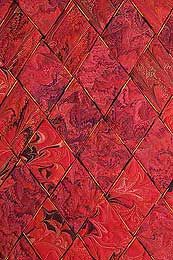 SO….I was awake early morning composing the start to this small rant. Yesterday a former retired colleague posted that he, the art teacher, had subbed for a math teacher and within five minutes had convinced all the students that algebra was pointless in their lives. My quick Facebook comment was something like “oh, so NOT true….”
SO….I was awake early morning composing the start to this small rant. Yesterday a former retired colleague posted that he, the art teacher, had subbed for a math teacher and within five minutes had convinced all the students that algebra was pointless in their lives. My quick Facebook comment was something like “oh, so NOT true….”
As I pondered this during the night, I thought of a bunch of things. That math teacher who has struggled all year trying to convince most of the students that algebra is worthwhile just had his job made so much harder. If a math teacher subbed in an art teacher’s classroom and said “why do art because it’ll never make you any money,” he/she has effectively destroyed a lot of budding artists.
Kids listen to what adults say. Now I’m coming at this rant from both angles. I teach college algebra one morning a week at The Art Institute of Tucson. Art and Math, so there. I really work at developing mathematical examples that are applicable to adult students, many of whom see no point to college algebra. So let’s take a look at the practical applications of algebra and all its rules in real life.
1. Order of operations (PEMDAS): if you’re an artist, you don’t pick out your matting before the painting is done. If you’re a chef, you know certain recipes HAVE to be done in a certain order or you ruin the dish. In real life you don’t put your underwear on last. Life is governed by some basics, and that’s what order of operations is all about. This principle teaches you to look for and use order. If you’re designing a video game or a movie, a story board is pretty darn important. Some things have to happen first before others.
2. Algebra teaches you to think: boy, do students hate this one, but it’s true. There is order in life, and algebra is an exercise that gets us to see what we have to do first, second, and so on. Solving equations is all about thinking through the problem and following a set of steps. Reading directions is much the same (even if you’re like my hubby and try to intuit what comes first….) Laying out a sewing pattern for cutting is thoughtful. If you think of a menu for an event as an equation, you realize that you have to proceed through the preparation pretty thoughtfully.
3. Combining like terms: think about recipes and ordering. One recipe calls for three cups of flour, another for 2 cups of flour, and the third one just a couple of tablespoons. Do you order each separately? Hopefully not, because that would be tedious and time consuming and probably not cost effective. That’s what combining like terms is all about. 3A + 5B + 2C = 240 could be your supply order and total amount for an event, an art project. Think about planning your art budget for the year for your classroom. You are ordering construction paper….you break it down to amount of packages of each color needed, and then you end up combining all the construction paper before going on to think about your paints. Then you total everything for the final amount. Combining like terms….
4. Exponential functions: recognizing these functions is pretty darn important if you are buying a car, a house, or medicine, just to name a few.
You better hope your pharmacist understands how long certain meds stay in your bloodstream before you have to take a new dose. Or…do you understand just how much you are paying in a car loan per month (which is linear) and how the time of your loan affects the value of your car (exponential). And if you want to win the big lottery……
5. Quadratic functions: aside from the fact that the makers of Angry Birds are making a small fortune using quadratic functions to create a game, anyone who has done anything in sports will recognize that a golf swing, a basketball shot, a baseball swing, a forward pass with recognize the inevitable parabola created.

http://www.mathamazement.com/Lessons/Pre-Calculus/02_Polynomial-and-Rational-Functions/quadratic-functions.html
You better hope your professional sports coach understands the equations that will improve your abilities.
So just a few examples……I could go on, but hopefully I’ve made a convert or two. And…just because…here’s a classic Abbot and Costello routine to show just how easily math can be misunderstood…..
May the Algebra Force be with you……….
Top Ten Tuesday
An interesting web week…watched a lot of humor on YouTube, as well as a lot of math videos for my algebra class. Here’s one on exponential functions in real life – earthquakes.
A tour of the Google Data Center – colorful, just like the logo!
How cool are these! From Alisa Burke – stone sugar skulls!!
This from Letters of Note is heartbreaking. A reminiscence of the Pam Am explosion over Lockerbie, Scotland.
Interested in education issues? Harriete talks about a show opening that deals with standardized testing. If you are at all familiar with the bell curve, you’ll appreciate one of the art works.
This juggling is fabulous!!!! One ball, who knew?
A whale of a tale, from the Great Whale Conservancy – beautiful story.
Put Johnny Carson and Dom DeLouise together, along with some raw eggs, and it’s just hilarious! They don’t make ’em like this any more!!
If you are not familiar with Design Seed, check out the interesting color combinations – some colors I would never have thought to put together.
And finally, if you haven’t visited Craft Gossip, you need to put it on your lists. Posts every day, and then some! Lots of great craft ideas to try, especially for and with kids.
 That’s it for this week. Send along great links that you find out there on the web!
That’s it for this week. Send along great links that you find out there on the web!
10 Things I WILL Miss About Teaching
While retiring is going to be a joy, there are definitely some things I am going to miss about teaching. So here goes:
1. The Kids. Even the class from H*** this year had its good moments. The kids keep me young, they keep me laughing, and they’ll believe just about anything you tell them. Case in point: Nicole a year ago asking me where zombies go when they die. Despite my trying to get across to her that zombies don’t exist, she kept asking, saying “Hypothetically.” So I finally answered “They go to algebra heaven.” And she was fine with that answer.
2. The challenge of teaching so many different subjects and learning so many new things. Over the years it’s been high school American History, AP US History, psychology, literature and writing, grammar, earth science, basic math, middle school social studies, elementary gifted programs, middle school math, and finally high school math. I’m a walking Jeopardy board.
3. Mathematics, particularly algebra and geometry. After some dismal experiences in high school, I have relished understanding the ins and outs of algebra and geometry, and I will miss the opportunity to continue to improve my explanations of how algebra really works.
4. The Kids. I am in touch through Facebook with so many former students, and I just love watching them grow and have families.
5. Student theater. I did this for 15 years, thanks to one of my first mentors, Sue Ann Loudon. From Carousel to Oliver to Music Man to Peter Pan and numerous small plays in between, I loved every moment, and I have the pictures and tapes to prove it. But that’s a job for someone much younger.
6. Conferences, especially when paid for by the school districts. I loved my time with the art partnership with the Kennedy Center for the Performing Arts. A great time at the ASCD conference both in Baltimore and Anaheim – and if the principal had approved our plan for taking kids to the Getty, so many more would have benefited. To think it all started with the National Association of Gifted and Talented in Portland, and included being in DC the night of – and day after – the 2000 election for the International Dyslexia Conference.
7. The creativity of planning a successful lesson. When it goes right, there’s nothing better.
8. Being “on stage” and having a good time with the kids during lessons. There’s all the voices and chants and little dance moves, the quadratic formula to the tune of Jingle Bells, and all the videos.
9. The “Big Projects.” All the plays, World Peace Day in April 1972, Model UN in 1973, the Shakespeare Festivals with 150 kids, the Learning Lab, and many more.
10. The Kids and making a difference in their lives. It took me a long time to realize that this is what I was meant to do.
On Rethinking Retirement……
 Today was the first day of two for professional development on Understanding by Design, or UbD. The staff at the school all has to have this training as part of our three-year plan, and I was resisting this because I’ve read through elements of this on my own, as well as tried to apply some of the “big ideas” to a museum project several years ago. I am here to say today is causing me to seriously rethink retirement – the day was amazing, and I do not say that lightly about professional development.
Today was the first day of two for professional development on Understanding by Design, or UbD. The staff at the school all has to have this training as part of our three-year plan, and I was resisting this because I’ve read through elements of this on my own, as well as tried to apply some of the “big ideas” to a museum project several years ago. I am here to say today is causing me to seriously rethink retirement – the day was amazing, and I do not say that lightly about professional development.
Understanding by Design is a three-stage program to develop more meaningful curriculum that is effective, engages students, and promotes enduring understanding, as Howard Gardner would say. We spent the day on Stage 1, unwrapping the curriculum in order to plan for the end result. Duh. In 20 years of doing student theater, I always did what I call “backplanning,” but NOT ONCE did I think to apply that skill to my classroom teaching.
As we continued through the day, I kept seeing lights at the end of the tunnel, answering for me ways to fix what I am unhappy with in my algebra classes. I do too much direct instruction, I don’t have the kids do enough inquiry, and they aren’t engaged enough or see algebra as a meaningful course of study. I actually wanted to read through standards and try to cluster some of the performance objectives so the planning makes more sense. The warm-up we did would make more sense than the (to be honest) drill and kill I usually do for practice (and, really honest, management…). In fact, I have some ideas for small group bell work for next week to extend some of the understanding.
All through the day I was (and still am) very conflicted. I am planning to retire in two and a half more years. I have been dealing with some health issues that may make me retire early. Plus, I realized if I go the full years more I will actually end up hurting my retirement benefits, as there hasn’t been a raise, and nothing is in sight. Two and a half years would cut off one of my higher salary years. So I am looking at numbers.
But then I sit in a workshop and get truly excited about trying some new strategies and ideas for teaching algebra, and I don’t want to leave. Retirement is an ending, as well as a beginning. I started teaching 40 years ago this September, and while it is probably time – age-wise – to go, it feels like “the end.” I don’t think I’m ready for closure, even though I want to seriously expand my art work and licensing. I’m not sure I can “let go” of 33 years of teaching, when I still feel like I have a lot more to offer. I still love this stuff – workshops, class management, curriculum, and all. I miss the teaching teachers that I used to do. I have all these skills and experiences (and endorsements) from all these years, and I’m not sure I can give it up…..
So just when I think I am coming to decisions, something happens to change it all. Darn you, Dr. Larry….now what do I do?
Algebra and Politics – Who Knew?
![]() Who would have thought algebra would get political? Surely not me, naive person that I still am….I’m at Walgreens earlier today and I commented on a Halloween picture. Seems Walgreens will give a free 4 by 6 photo if the kids come in costume to the store on Friday. I mentioned that I thought that was a great idea. I said my students and I were celebrating Distributive Property Day instead of Halloween.
Who would have thought algebra would get political? Surely not me, naive person that I still am….I’m at Walgreens earlier today and I commented on a Halloween picture. Seems Walgreens will give a free 4 by 6 photo if the kids come in costume to the store on Friday. I mentioned that I thought that was a great idea. I said my students and I were celebrating Distributive Property Day instead of Halloween.
If you follow this blog, you know that I’m attempting to bring some humor to an otherwise excessive candy day that drives teachers nut – it’s on Sunday this year, so Monday will not be pleasant….Distributive Property Day is when we “share with everyone. Here’s an example of the distributive property: 3(x + 2). When you simplify, you end up with 3x + 6. You “share” the 3 with everything inside the parentheses, hence my “sharing is caring.” I tell the kids Halloween is just a marketing ploy to selll candy, and we’d be better off if we practiced sharing is caring.
Back to Walgreens. I tell the guy my class celebrates Distributive Property Day, and I explain about “sharing is caring.” To which he says (and I am not kidding) “That sounds like something Obama would do – distribute property to all.”
What? Huh? Am I missing something?
Student Artwork – Slope Art
This first day back to school I wanted to ease the kids easily back into working with slope, so we viewed some videos about practical uses of slope – roof lines, ski slopes, and the like. Then I introduced them to zentangles and talked about doodling using ONLY straight lines. Most of the kids got right into drawing and got lost in the drawings pretty quickly. A few were like I used to be, worried about what the final product would look like. Overall some nice art was created. We will move from this into an actual art project with straight lines, with the equations for each of the lines used. But that’s for next week….
In the meantime, here’s their work (taken with my new digital camera that I can carry around in my purse):
Art – It Feels So Good!

The kids and I were definitely on the same page today. They didn’t want to work, I didn’t want to work, they had lives outside of school, I have a life outside of school….so we talked about not giving up when we still have work to learn. I took them through everything they had accomplished in algebra 1:
*making a table, a graph, and an equation for a linear function;
*making a table, a graph, and an equation for an exponential function;
*making a table, a graph, and an equation for an absolute value function; and
*making a table and a graph for a quadratic function.
THe only thing we really have left to do is solve quadratic equations through factoring and the quadratic formula. I think they were pretty impressed with themselves, and we had a great class. No more whining – we were in this together!
But – I still wanted to get home and work some more on the gecko from yesterday. I still felt there were a lot of ideas to try in Photoshop. So you can go back an entry and see the original image – and then look at this new one -lots of embossing, and I learned how to change the shadows from a default black to a color within the marbled pattern. I continue to be amazed at the amount of texture the marbled fabric gives the design.This one looks like a piece of copper. Another “wow,” and I foresee a series with the gecko, and maybe a few other common images of the Southwest.
Don’t forget our CONTEST!
The Mathematics of Photoshop
Okay, you’re probably thinking – math? I’m done, no need to read further. But I gotta tell ya, this new lesson by myjanee.com for Photoshop starts us out reading some information about scanners. And now I not only understand pixels (among other things), but the use of the powers of two and RGB and creating the millions of colors available is absolutely fascinating. None of this would have made sense to me even 10 years ago, but as I teach and learn more math, I begin to see it everywhere. I just had no idea there was so much of it within the program itself. I shouldn’t be surprised, because computer programming is all mathematics, but actually seeing it – and having it make sense – is just too beautiful.
